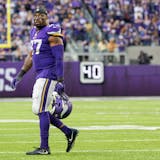Dogs see the garden differently than we do.
I find the new water feature in my garden soothing. Henry, my shaggy doodle dog, thinks it's the world's greatest water dish. The soft blades of the newly sodded front lawn are a sign of spring to me. To him, it's the perfect potty.
I'm of the opinion that dogs don't mean to be destructive. But in the course of being dogs, the garden — and gardener — may suffer. Yet there are ways to defend your precious plants and redirect your dog's behavior so that the back yard is a safe and peaceable kingdom for the both of you.
Here's how:
Go with the flow
If your Labrador is blundering through your flower beds, try erecting attractive barriers that steer it away from the petunias.
You also can strategically design your garden to minimize damage: Place large containers, garden art or driftwood near more delicate plantings or plant a border of sturdy grasses or short woody shrubs to protect annuals and perennials. And raised beds send a signal to Ruff to stay out of the veggies.
Another wise idea: Follow your pup's lead and use the paths it regularly patrols to redefine your garden. Fill the paths with smooth steppingstones or pea gravel, or mulch them with small wood chips that are easy on your feet as well as its paws. Smaller wood chips won't get tangled in long or curly coats as easily as larger chips do.
Seeing spots
The nitrogen and salts in dog urine over-fertilize lawn grass, making dark green patches or completely burning the grass, resulting in those ugly brown spots. Unfortunately, there is no quick fix. You can re-seed or re-sod, but that is time-consuming and expensive. You can try pouring a gallon of water on the spot immediately after your dog urinates, but that's difficult to keep up with.


